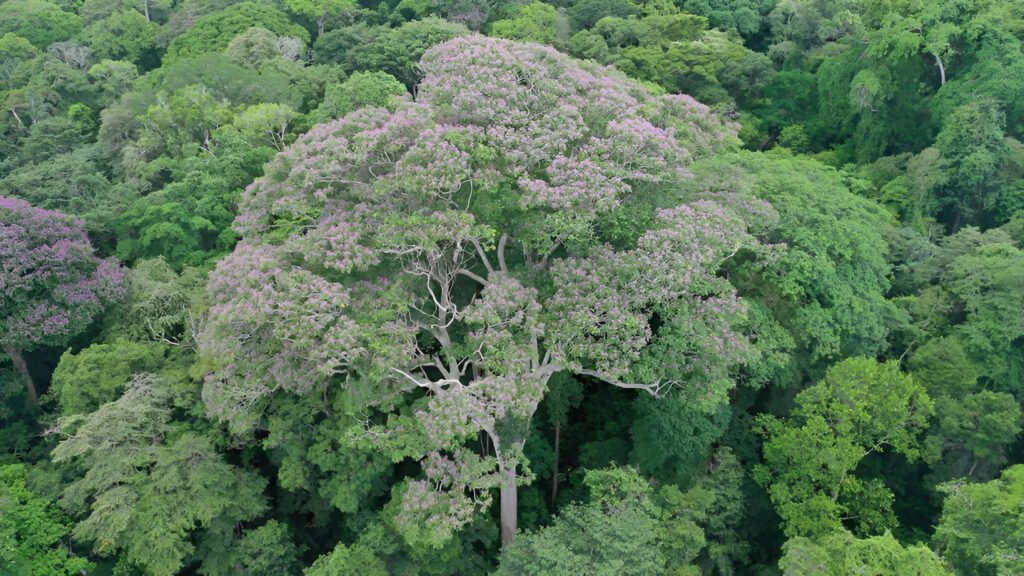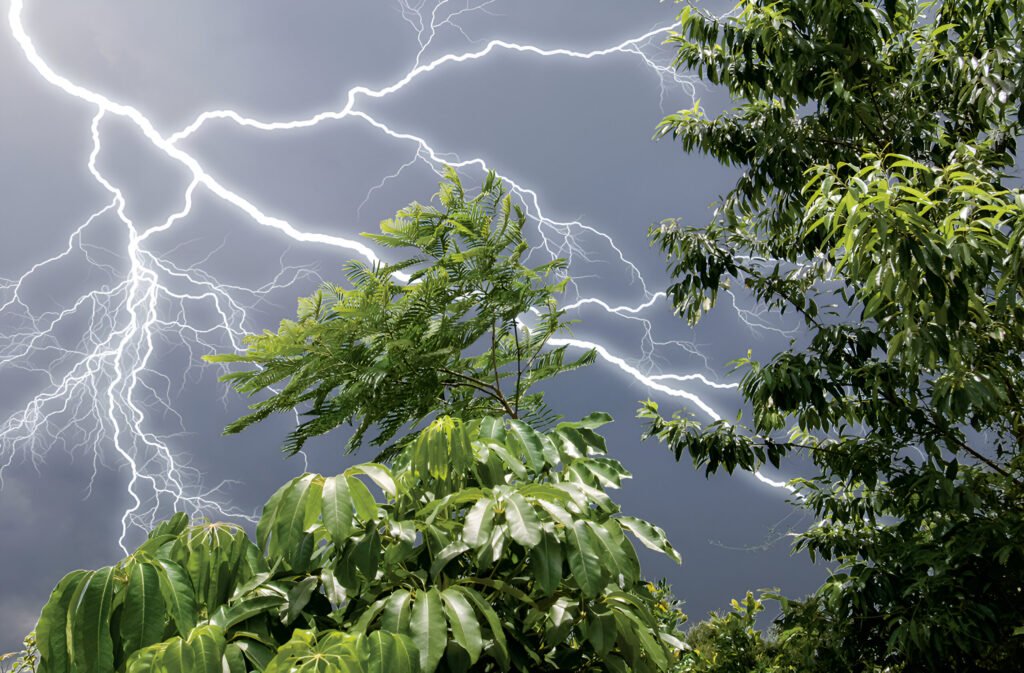
As animals in the tropics try to survive in a habitat full of unique creatures, they develop unique adaptations to cope. Some trees have developed the quite extraordinary ability of being able to transform destructive forces into an advantage. Not only does this provide the trees with much needed sustenance but it proves the complex interaction between natural forces and ecological maneuvers.
Nature’s Natural Conductors: The Tonka Bean Tree
Dipteryx oleifera or the tonka bean tree is widespread across central and southern america. It is a clear example of how extraordinary adaptations work. Recent studies done in Panama’s Barro Colorado Nature Monument suggest that these trees survive lightning strikes, and use them. This was concluded after a decade worth study involving nearly 100 lightning events. Each tonka bean tree struck by lightning was said to nearly TOP the mark of 2.4 tons of biomass destruction, alongside getting rid of 78% of parasitic vines hosted on its canopy.
This tree’s self-preserving structure is attributed to its tall stature and strong shape which channels lightning energy toward the outside, greatly reducing internal damage. Strikingly, trees that were struck by lightning had a lifetime seed production increase of 14 times, indicating that such events might activate some reproductive processes.
Lianas: Amplifiers of Lightning’s Reach
Some trees have adapted to take advantage of lightning, while others unintentionally make its impact worse. Lianas, a type of woody vine found in tropical forests, are believed to be the most active conductors of electric currents during a lightning strike. Because of their water content and ability to span over trees, they are able to pick up lightning energy from taller trees and pass it on to smaller, adjacent trees. Such interconnectedness increases the chances of collateral damage which can significantly raise the death rate of understory plants.
The role of lianas is to spread lightning destruction while at the same time determining the forest’s structural composition by which species persist or dominate after the disturbance.
In response to this protective feature, the Odisha government has launched a massive tree plantation campaign with the goal of planting nearly 1.9 million palm trees throughout the state. This is part of an integrated effort to minimize deaths caused by lightning strikes, especially in rural areas where these occurrences are frequent.

Consequences for Forest Ecology and Conservation
The capability of certain trees utilizing the phenomenon of lightning for survival and competition has staggering impacts on forest ecosystem processes. These evolutionary mechanisms shape species allocation, forest composition, and the variety of life present within the forest. These relationships must be well understood in the context of protective measures, especially when considering the impact of climate change which is likely to increase the number and intensity of lightning storms.
Furthermore, the application of this information can improve the efficacy of forest management plans. For example, the active conservation of species that passively protect forests from lightning damage could sustain forest health while decreasing human fatalities.
Conclusion
The events concerning the lowering of the bolt to a blast onto the trees illustrates the adaptive and complex phenomena of the ecosystem and environment at large. From the tonka bean tree’s luring of lightning for competition elimination to the unintent design of lianas to spear palms, the protective role palms serve sheds lighting on the multifarious interrelationships amongst growing organisms and the forces of nature. Deepening these concepts, one values nature’s resilience and the need to protect such qualities against environmental threats.











